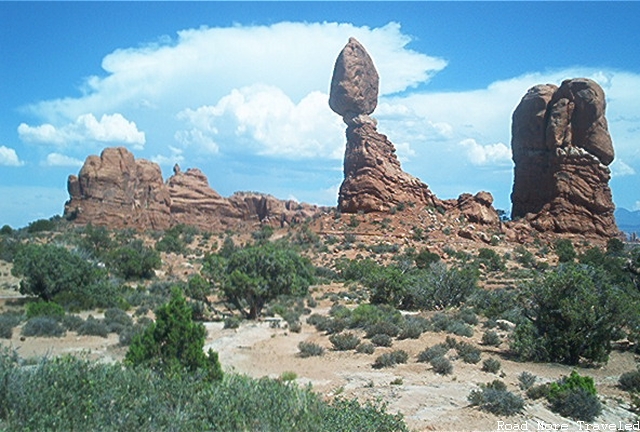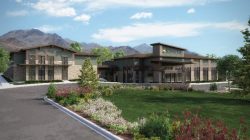
Utah is a haven for summer road trips, with wide open spaces and several spectacular National Parks, the best known being Arches National Park outside of Moab. Both the town of Moab and the state of Utah, in fact, rely heavily on tourism to fuel their economies. Lately, though, it seems that they’re getting a little too much of a good thing. Arches in particular has been overrun by visitors lately, so much so that the park’s superintendent is proposing a reservation system to limit the number of visitors.
You might be thinking, what gives? How can a park in the middle of the desert have an overcrowding problem? The problem in this case was a tremendous traffic jam Memorial Day weekend on Highway 191 leading north out of Moab to the park entrance, which stretched several miles back into town at various points over the weekend (park rangers can only process so many visitors at once, most of whom need to purchase park passes on-site). This created a hazardous condition, forcing the Utah Highway Patrol to temporarily block the entrance to the park. Within the park itself, visitors reported other crowding problems, notably overflowing parking lots at trailheads and major sites like Delicate Arch, resulting in illegally parked vehicles along the unpaved shoulders of the park’s main road.
I’ve visited Arches twice, once in the summer of 2005 and again in the summer of 2007, the former as part of a 19-day, 21-state, 8,200-mile solo road trip that I hope to someday chronicle on this blog. While there were certainly a fair number of people around both times, it wasn’t overcrowded, not even at Delicate Arch. According to the Deseret News article linked to above, the real explosion in tourists occurred starting in 2014, reportedly rising 20 percent that year, with an even greater rate of increase so far this year.
Park officials expect approximately 1.5 million visitors this year, up from 1 million in 2010, with most of that increase just in the last two years. As an interim step, the National Park Service will begin implementing a surcharge on entry fees between 10 A.M. and 2 P.M. during peak season; no word yet on how much the surcharge will be, or the specific period the higher fees will be in force, but I would imagine Memorial Day to Labor Day beginning next year.
As a permanent, solution, though, park officials have proposed a controversial reservation system to limit the number of visitors. Though details have not yet been announced publicly, and will likely change several times during a series of public hearings beginning in July, I would imagine the system would work similar to the one used at Stonehenge.
Visitors are required to purchase entry tickets in advance for a 30-minute entrance window on a specific day; for example, for our upcoming trip, I purchased tickets for a 2-2:30 P.M. entry time on Thursday. Tickets do not place a time limit on how long you can stay, however. If you show up without a ticket, only a limited number of walk-up tickets are available, which means you may not get in if the park is busy (if you miss your time slot, you may have to wait to be accommodated).
While not that difficult to deal with, I’m not a fan of such reservation systems – mainly because, you just know there’s going to be plenty of people every year pulling a Clark Griswold and just showing up, only to become very, very agitated when they find Wally World, er, Arches closed. That should make for some good Twitter angst. Plus, a large percentage of visitors to National Parks are from outside the country, many of whom will likely be unaware of reservation requirements, since no other park requires them.
In my opinion, if crowd control is the goal, an easier option would be restricting private vehicle traffic on the park road, and setting up a hop-on, hop-off shuttle system to ferry visitors inside the park. The same system seems to work pretty well at Arches’ cousin in the southwest corner of Utah, Zion National Park.
All this being said, don’t let the crowds stop you from visiting Arches. It truly is one of the country’s most magnificent National Parks, and hiking up to see Delicate Arch at sunset is one of my most memorable travel moments. However, you might just consider going in the spring or fall instead. The weather is cooler – daytime temperatures frequently exceed 100 degrees in the summer, and with little shade, hikes can get uncomfortable – and crowds are thinner.
Photo at top: Balanced Rock, Arches National Park, July 14, 2005



